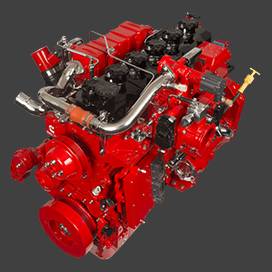Сеп . 19, 2024 07:49 Back to list
brake drum temperature
Understanding Brake Drum Temperature and Its Importance
Brake drum temperature is a critical aspect of vehicle safety and performance that often receives insufficient attention. As braking systems are subjected to intense stress, especially during prolonged or heavy braking, monitoring the temperature of brake drums can help prevent brake failure, ensure consistent performance, and enhance overall safety.
Brake drums are components of drum brake systems, which are commonly found on vehicles such as trucks and older cars. When the brake pedal is pressed, friction material inside the drum presses against the surface of the drum itself to slow down or stop the vehicle. This friction generates heat, and if not managed properly, excessive heat can lead to brake fade, a phenomenon where the braking efficiency diminishes significantly.
Understanding the temperature dynamics of brake drums is essential for several reasons. First, high temperatures can cause the brake components to wear out faster, potentially leading to premature replacement of the brake drum and associated parts. Moreover, as the temperature rises, the risk of thermal expansion increases, which in turn can affect the overall braking effectiveness. In extreme cases, overheating can lead to severe brake failure, resulting in dangerous situations on the road.
Another crucial aspect to consider is the relationship between brake drum temperature and performance. When drums overheat, the brake performance can deteriorate. Drivers may find that they require more pressure on the brake pedal to achieve the same stopping power, leading to a false sense of security. If this issue remains unaddressed, it can escalate into a dangerous situation, especially in emergency braking scenarios where every fraction of a second counts.
brake drum temperature

To mitigate the risks associated with excessive brake drum temperatures, several strategies can be implemented. Regular maintenance and inspections are paramount. Technicians should check for signs of overheating, such as discoloration or warping in the brake drum, and ensure that the brake system is functioning correctly. Using high-quality brake pads designed to withstand higher temperatures can also help manage heat distribution more effectively.
Driving habits significantly influence brake drum temperature as well. Aggressive driving, such as rapid acceleration, hard braking, and frequent lane changes, can lead to increased heat buildup in the braking system. By adopting smoother driving practices, drivers can help reduce the strain on their brakes and prolong their lifespan.
In addition, installing ventilation systems or upgrading to more advanced braking solutions—like disc brakes—can improve heat dissipation and maintain optimal temperatures under heavy use. For fleet operators and heavy vehicle users, monitoring technologies can provide real-time data on brake temperature, allowing for proactive management of braking systems before issues arise.
In conclusion, understanding brake drum temperature is vital for vehicle safety and performance. By recognizing the factors that contribute to high temperatures and implementing appropriate strategies for management, both individual drivers and fleet operators can ensure that their braking systems remain effective and reliable. Regular maintenance, improved driving habits, and technology upgrades can make a significant difference in brake performance, ultimately leading to safer road experiences.
-
Brake Drum Man - High-Quality Drum Brake Drums & Brake Shoes for Reliable Performance
NewsJun.24,2025
-
High-Quality Brake Drum Kamaz – Durable Drum Brake Drum & Brake Shoe Replacement
NewsJun.10,2025
-
High-Quality Brake Drum Liza for Drum Brake Systems - Superior Durability and Performance
NewsJun.10,2025
-
High-Quality Brake Drum Kamaz – Durable Drum Brake Drum & Brake Shoe Solutions
NewsJun.10,2025
-
Durable Kamaz Brake Drums High-Performance Truck Parts
NewsJun.09,2025
-
Premium Brake Drum Maz Kit with Shoes Enhanced Braking
NewsJun.09,2025
